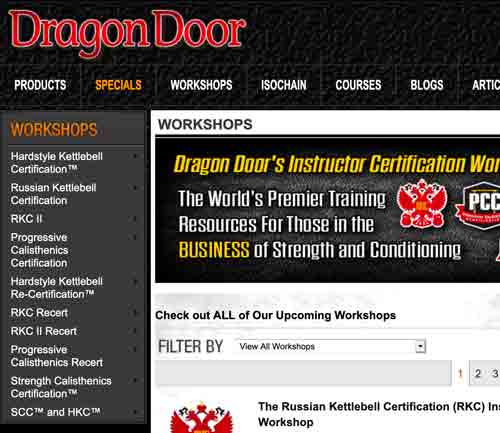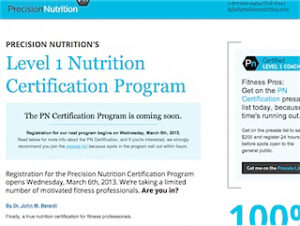
“True strength comes from within“.
We’ve all heard similar sayings. Most successful athletes know that their mentality plays a strong role in their performance. Many recreational athletes and trainees also realize on some level that their thoughts and moods affect their workouts. But very few actually dedicate sufficient time to their Mental Conditioning (to “train their brain“). The fact is that the mind (especially the subconscious mind) actually has INCREDIBLE power that many don’t acknowledge. Our mind has the ability to make us stronger, more muscular, more athletic, more powerful, even wealthier and happier! Sound unbelievable? As this article will explain, your inner world creates your outer world.
The intention of this article is to share some of the basics of exercise and sport psychology and to illustrate the importance of our thoughts and emotions relative to our physical goals. I will also describe some simple techniques that you can use regularly to improve you performance. This information is directed to those readers who are already participating in a regular bodybuilding or strength training program and are motivated to achieve greater results.
The truth is that it’s our mind that determines what results we will achieve. The process goes something like this: Your thoughts and beliefs lead to your emotions, which in turn lead to your actions, which cause your results. Unfortunately, most of us put up our own psychological barriers that interfere with our performance and limit our success. The four-minute mile was a famous example of a psychological barrier. For years runners were apparently not able to run a mile in under four minutes, although many came close. That led to the common belief that this was physically impossible. Incredibly, within a year and a half after Roger Bannister’s famous breakthrough, 16 other athletes accomplished it! It wasn’t because these athletes were suddenly training harder. They were no longer limited by their beliefs once Bannister had demonstrated what was possible.
What I’m saying is that with a bit of mental conditioning you can expect far superior results from your training, and in many cases it’s all that’s holding you back.
The four basic principles of mental conditioning are as follows:
- Set SMARTER Goals.
- Create a strong, clear mental picture of these goals using Visualization and Imagery training.
- Reinforce these ideas often using Affirmations.
- Maintain a positive focus on your objectives and employ interventions such as negative thought-stopping techniques.
The field of exercise and sport psychology is significantly more involved than this, but these principles provide a great starting point for developing a mental training program.
Setting SMARTER Goals
Studies have shown that appropriate goal setting leads to performance enhancement, with moderate to strong effects. To remember the key principles of effective goal setting, think SMARTER; your goals should be:
- Specific – indicate precisely what is to be done. Avoid vague alternatives
- Measurable – you should be able to quantify your goal
- Action-Oriented – develop concrete plan of actions required to move toward your goals
- Realistic – start with moderately difficult goals, rather than too easy or difficult to reach
- Time-Constrained – set specific time limits for both short term and long term goals
- Evaluated – record and monitor your progress regularly
- Reversible – in cases of injury, or failure to achieve a difficult goal, reset goals as needed
Take some time right now to write down your short term goals as well as your long term “dream” goals (the ones that may seem a long way off and harder to achieve). Writing your goals down is the basis of a contract with yourself. It also helps to publicly acknowledge your goals.
Short-term or daily goals are the most important because they provide a focus for our training in each and every session. Past research on elite athletes found that setting daily training goals was one factor that distinguished the successful performers from the less successful.
Many have also found it useful to write a ‘Mission Statement‘ for themselves, which summarizes their basic goals and primary objectives in their life.
Relaxation and Visualization
Scientific research has shown the use of Visualization (or Imagery) to be an important adjunct to physical training. This is why world-class, elite level athletes and coaches use imagery techniques regularly. In fact, past studies have demonstrated that athletes using visualization dramatically improved their performance by comparison with those who didn’t.
With clear and vivid visualization training, certain parts of our brain can be stimulated to illicit small neuromuscular signals and specific hormonal changes that can lead to real physical changes in your body and your performance. In addition, we can reprogram our subconscious mind to develop stronger neural “connections” that will reinforce those positive thoughts and beliefs that empower us to achieve our goals.
For visualization / imagery training to be most effective you need to be in a relaxed state with as few distractions as possible. The following simple Progressive Relaxation exercise will help achieve this.
Progressive Relaxation:
- Choose a quiet, relaxing place where you won’t be interrupted.
- Before you start, do a few gentle stretching exercises to relieve muscular tension.
- Make yourself comfortable, either sitting or lying down. Close your eyes.
- Start to breathe slowly and deeply, in a calm and effortless way.
- Gently tense, and then relax, each part of your body, starting with your feet and working your way up to your face and head.
- As you focus on each area, count backwards from 10 to 1, relaxing more deeply with each number. Think of warmth, heaviness and relaxation.
- Push distracting thoughts to the back of your mind; imagine them floating away with each breath.
- Don’t try to relax; simply let go of the tension in your muscles & let them become relaxed on their own.
- Let your mind go empty. Some people find it helpful to visualize a calm, peaceful place such as a garden or meadow.
- Stay like this for about 15 to 20 minutes, and do your visualizations (see below). Then take some deep breaths and open your eyes, but stay sitting or lying for a few moments before you get up.
- Your imagery should be as vivid and clear as possible.
- Always visualize positive and controllable scenarios.
- Try to imagine in real time: the visualization of an experience should last as long as the actual event (eg: 1 minute). Often we imagine events more quickly than we actually experience them. Model your imagery in “real time“.
- Visualize both the process of achieving your goal, as well as the positive outcome.
- See yourself getting up in the morning and being really excited about your goals. See yourself so excited you can’t stay in bed any longer.
- Mentally rehearse your training drills, picturing perfect performance in real time.
- Imagine in vivid detail how much faster, stronger, more muscular, more powerful, more athletic you are becoming and how smoothly your body responds.
- Visualize how successful you will be in competition or training.
Visualize your self as a warrior, with unlimited energy. See yourself as unbeatable. - Imagine that you have already achieved these goals you have. How does it feel? What do you see? What would you be hearing? Picture every detail as if it’s real.
- Be personal – (Use I, me, my, or your first name)- “I AM RESPONSIBLE FOR THE INTENSITY OF MY PERFORMANCE.”
- Be positive (do not focus on what you “don’t want”)– “I CONSISTENTLY STRIVE TO COMPETE AT THE HIGHEST LEVEL OF MY POTENTIAL!”
- Use the present tense and phrase the affirmation as if the goal was already accomplished– “I NOW HAVE A HEALTHY DIET THAT GIVES ME ALL THE STRENGTH AND ENERGY I REQUIRE.”
- Change yourself not the other person -“I STAY FOCUSED ON MY GOALS AND I AM UNAFFECTED BY THE BEHAVIOR OF OTHERS.”
- Do not compare yourself with anyone -“I AM IN IDEAL PHYSICAL AND MENTAL CONDITION!” Avoid: “I am in better shape than Herman!”
- Use action words, and keep it short, simple and powerful – “I TAKE CHARGE OF MY THOUGHTS AND FEELINGS WHENEVER I TRAIN OR COMPETE.”
- Be realistic, but stretch – “I HAVE THE ABILITY AND SELF-DISCIPLINE NEEDED TO CONSISTENTLY FINISH IN THE TOP THREE.”
- Personalize it and use feeling words (involve emotion) – “I LOVE THE FEELING I GET FROM COMPETING AT MY BEST!”
- I respect, admire and model very successful elite athletes in my sport / activity!
- I enjoy training intensely and my body recovers easily and quickly.
When I train, I train hard. When I rest, I relax deeply. - I create my reality and I create the exact amount of my success.
- I am an excellent athlete! I have unlimited performance potential!
- I am getting bigger and stronger every day.
- I am grateful for all of my athletic successes so far.
- I am grateful for my health, my strength, my speed, my power, and my abilities!
- AM Hour of Power: Make an effort to get out of bed as soon as the alarm goes off. Also try to get as much natural sunlight as soon as you can each day; open the curtains and look outside. This will help to stimulate your RAS which will increase wakefulness. Take some deep breaths, choose one affirmation to say out loud, and visualize a positive outcome for the day to come. Rinse with cool water after your shower.
- Positive Environment: During your day, try to avoid interacting or associating with “negative“, non-supportive people. Those who put you down, complain often or who view themselves as “victims” could hold you back from your success.
- Rubber Band Method: If you feel a negative, non-supportive thought arising during the day, snap the elastic band on your wrist, and say “Stop!” Immediately after, rub your wrist gently and repeat an “opposite“, supportive affirmation to yourself.
- Record Your Successes: At the end of each day, in the evening, write down 5 successes in your journal, regardless of how big or small they are. This could be anything from ‘hitting a new P.R.‘ or ‘winning a contest‘, to something like ‘brushing your teeth in the morning‘.
- Visualizations and Affirmations: Repeat your list of affirmations out loud, then take some time to relax and visualize yourself having already achieved your goals and think of how great that makes you feel. Review your “Mission Statement” and your goals each day as well.
While you are in this relaxed state it is a perfect time to practice visualization training for a few minutes. This is an important part of your mental conditioning program. The key points to remember when practicing your creative visualization are as follows:
Here are a few simple suggestions of visualizations you can do, to get you started:
Strength Affirmations & Negative Thought Stopping
The next step is to learn to actively stop any negative thoughts that arise and replace them with a positive affirmation. Affirmations are positive statements used to reinforce that which you want to achieve.
All of us have negative thoughts of some kind that creep into our minds and interfere with our goals, such as “I’m a hardgainer. I can’t put on muscle; I’ve tried before and failed,” or “That guy always beats me!” Several methods exist to interrupt our worrisome or negative thought patterns before they spiral out of control. These methods can include visual, physical, or verbal stimulus. One of my favorite techniques, which I have applied with several of my clients, is the Rubber Band Method. This simply involves wearing an ordinary thick rubber band around your wrist and upon noticing a negative thought enter your mind, ‘snap‘ the band on your arm and say the word “Stop!”
In order to reprogram your subconscious mind, once you have interrupted the distracting or disturbing thought process you must then replace it with a verbal affirmation. Here are the key principles as well as some examples to consider when creating your own affirmations:
Some other examples of effective affirmations that you can use are listed below:
Try to make a list of your own personalized affirmations and read them aloud first thing in the morning and before sleeping in the evening, or at anytime you wish during the day. Create a feeling of belief in your affirmation statements; don’t listen to your doubts. The more frequently you use them the more effective they will be. Psychologists estimate that it takes about a month to overwrite our old negative programming and establish a new positive pattern in your brain. Stick with it.
Your Daily Mental Conditioning Routine
To help you implement these techniques on a regular basis, I have organized them into a simple daily regimen that you can follow. Obviously you will include your regular activities as needed.
Conclusion:
Achievements are based not solely on talent and hard physical conditioning, but on mental strength and a clear vision of where you want to go. You need to decide what you want, know why you want it, and develop a strong desire to achieve it.
Once you have done this, to change your results you must overwrite old negative programming and install positive new programming into your subconscious. This is accomplished through techniques such as effective goal setting, positive self-talk (affirmations), and mental imagery (visualization). As you progress you will increase your belief that you will succeed. Because your beliefs shape your reality, you will be surprised at how quickly you achieve results that you thought impossible a few short months ago.
If you have any questions or comments I am interested in hearing from you.
-Josh Hewett
“All we are is the result of what we have thought.” —Buddha











0 Comments